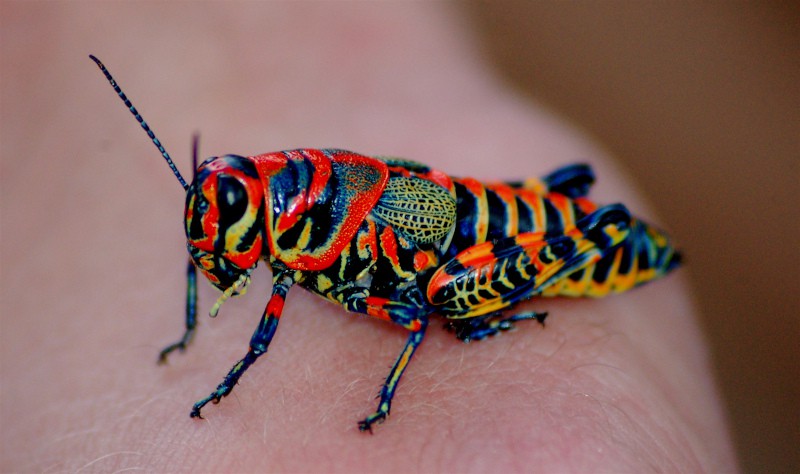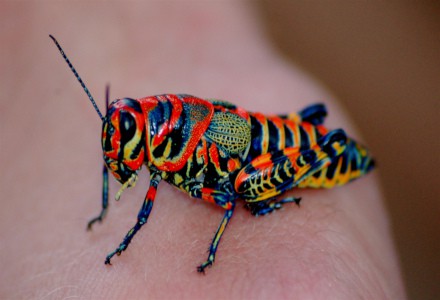
Rainbow Grasshopper Facts
- Firstly, though known by several names, that of Rainbow Grasshopper most accurately describes the beautiful Dactylotum bicolor.
- Secondly, fortunately for those who appreciate its loveliness, this beautiful invertebrate possesses a large endemic habitat range.
- Therefore, given that it also exists in sufficient numbers, the IUCN does not currently list it on the Red List of Threatened Species.
- In addition, the impressive coloring of this insect varies significantly from region to region, due to adaptation to local environments.
- Lastly, this remarkable species was first described by Toussaint de Charpentier, in 1843.
Related Articles
Rainbow Grasshopper Physical Description
Regardless of its extreme colorfulness and beauty, the Rainbow Grasshopper remains average-sized among related species.
It does, however, display a degree of sexual dimorphism. Females average a length of about 1.4 in (35 mm), but males only reach 0.8 in (20 mm).
Yet, unlike many related creatures in the world, this arthropod does not possess wings and is, therefore, unable to fly at all.
However, the most distinctive feature remains the vibrant colors, which include patterns of yellow, red, green, over a base of black.
- Kingdom: Animalia
- Phylum: Arthropoda
- Class: Insecta
- Order: Orthoptera
- Family: Acrididae
- Genus: Dactylotum
- Species: D. bicolor
Rainbow Grasshopper Distribution, Habitat, and Ecology
In addition to other impressive factors, the visually stunning Rainbow Grasshopper inhabits an extremely broad habitat range.
This small but gorgeous insect lives in an area that extends all the way from southern Canada to northern Mexico, in North America.
Furthermore, within that extensive range, the Rainbow Grasshopper has adapted to inhabit desert grasslands, prairies, and similar regions.
The adults feed on a wide variety of vegetation, often voraciously, but the nymphs often feed exclusively on a single species within the region.
Finally, the dazzling array of colors serves the evolutionary purpose of warning away predators, such as birds, since most find it distasteful.
Species Sharing Its Range
Check out our other articles on Erta Ale, San Diego Thornmint, Green Anaconda, 10 Extraordinary Reptiles, Flamingo Tongue Snail, Indian Bullfrog, Giant Oarfish

